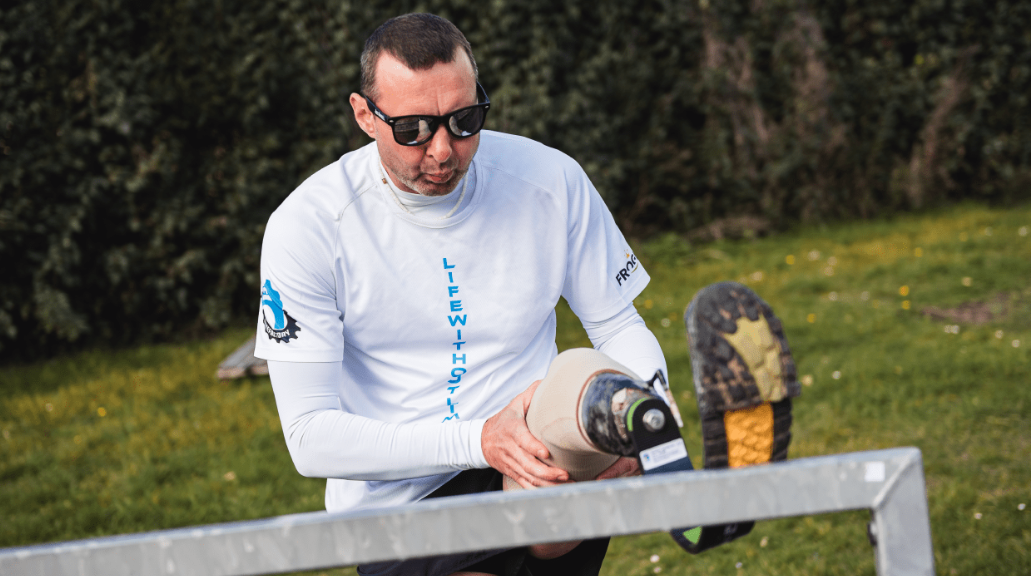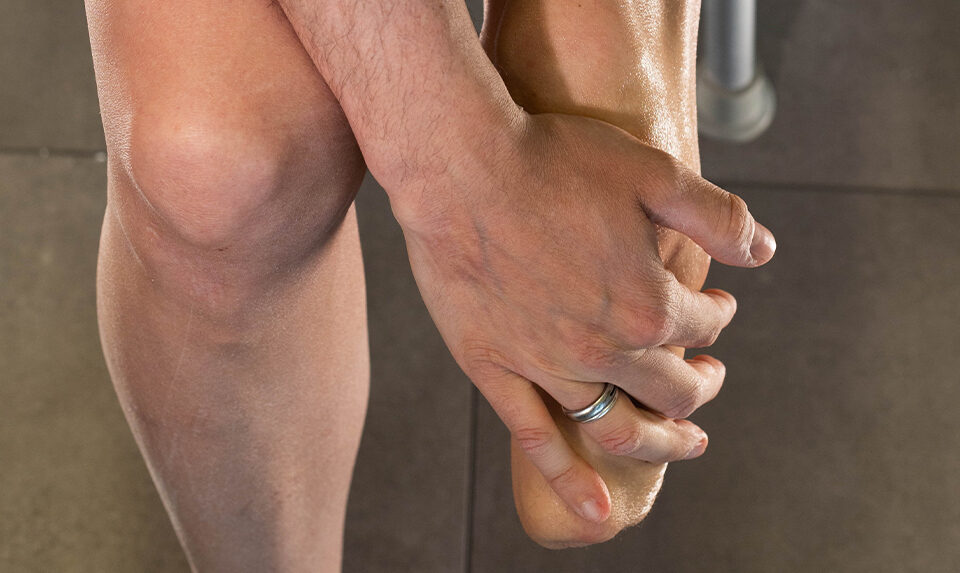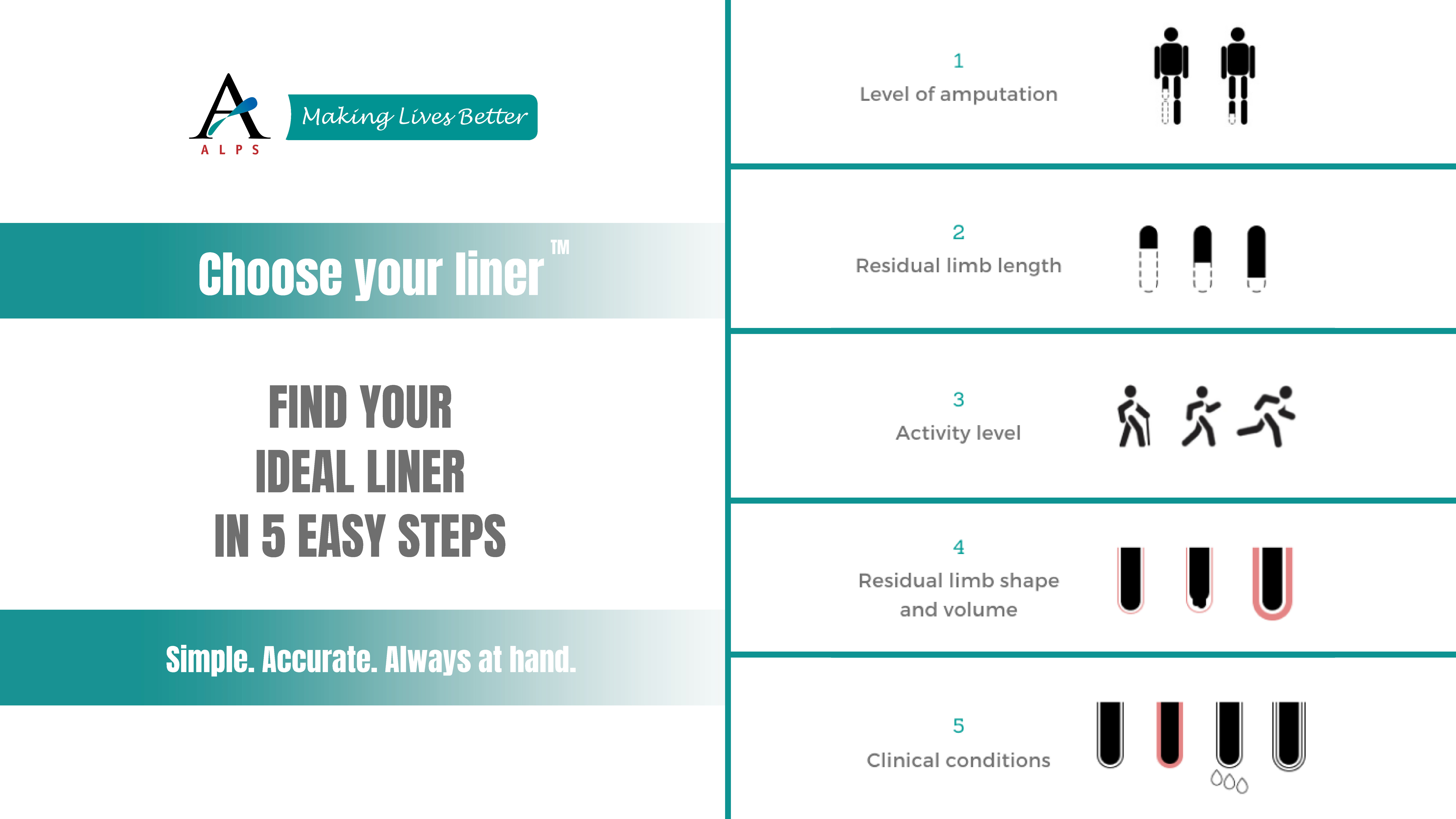
Choose Your Liner
October 22, 2020Let's Stretch the Right Way!
As we age, stretching becomes even more important. I integrate it into my routines, whether before or after a training session or after a race.
Stretching plays a vital role in my training, both before and after a workout. I feel like stretching regenerates my whole body.
Stretching involves a series of muscle-lengthening techniques designed to improve joint mobility, which is defined as the capacity to stretch your joints to their maximum without pain. Stretching exercises allow you to improve muscle length and elasticity.
For amputees, this is even more vital since it helps re-establish a new sense of equilibrium to compensate for the loss of limb. Stretching keeps the various zones of the body toned and flexible, helps prevent pain and reduces the chance of accidents during training sessions.
When carrying out stretching exercises, it is important both to work each part muscle group individually (arms, thighs, etc.), as well as the the body as a whole, working all the kinetic chains (particularly important to stretch the posterior kinetic chain).
In any case, all exercises need to be approached gradually. Whether you are working on muscle strengthening exercises, stretching, or those aimed at improving proprioception, it is essential not to proceed too brusquely, but to gently and progressively increase the intensity of the exercise, both to keep from tiring too quickly and, more importantly, to avoid the chance of accidents.
Let’s take a look at some of the exercises Mira has integrated into his routine in training to compete in triathlons (swimming, cycling, and running).
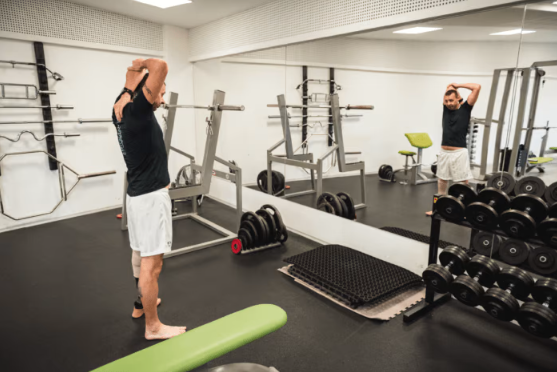
STRETCHING - TRICEPS
- Stand with your feet shoulder-width apart
- Reach your right hand back between your shoulder blades
- Use your left hand to gently pull the right elbow
- Maintain the position for 15 to 30 seconds and then repeat on the other side
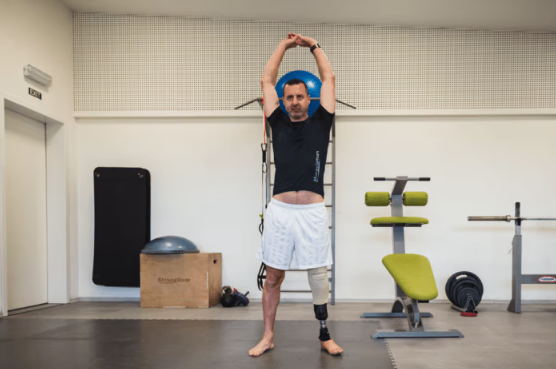
SIDE STRETCH
- Interlock your fingers and raise your arms straight up over your head, palms upward
- Stretch straight up and then as far over to the right as you can, stretching down your left side
- Hold for 15 to 30 seconds and then switch sides. Repeat the sequence one to three times

SIDE LUNGE STRETCH
- With your upper body straight and place your legs wide apart
- Shift your weight slowly to one side and bend your knee into a “lunge
- Hold the position for at least 30 seconds and then slowly shift your weight to the same position on the other side

STANDING HAMSTRING STRETCH
- Hold on to something to keep your balance
- Raise one leg up onto a support and straighten it
- Bend the knee of the standing leg slightly until you feel a gentle stretch
- Gently bend forward from your hips if you need more stretch
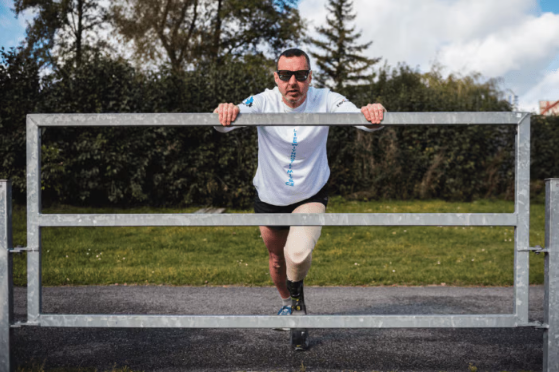
CALF STRETCH
- Stretch out your arms to hold onto a bar or touch the wall
- Put one foot forward and bend your knee, while you stretch the back leg keeping the knee straight
- You should feel the calf muscle of your back leg
PROPRIOCEPTION
Proprioception is the awareness of the position of your own body in space, including being aware of whether muscles are contracted or relaxed, without actually seeing it.
Exercises for proprioception increase balance, stability, and coordination, and therefore take on particular significance for an amputee.
These exercises range from very easy (balancing standing on one leg, making a “bridge” with one arm and one leg, etc.), to more difficult ones involving unstable surfaces (wobble and rocker balance boards, Bosu balls, wobble cushions, etc.).

